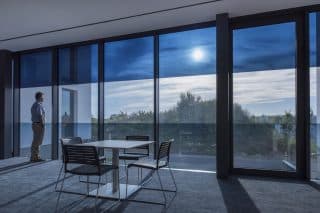Collectively associated with outdoor air, pollution is present indoors as well. Toxic chemicals, such as formaldehyde, are more prevalent inside than out. This is because traditional indoor wall paints emit VOCs (volatile organic compounds), a variety of gases including formaldehyde that are harmful over short and long-term. To address this issue, some indoor paint brands are constantly innovating VOC-free, non-toxic paints to also meet color and durability standards.
Anna Sova Luxury Organics, a small Texas-based company that produces Greenguard certified paint, advertises that 90% of their paint ingredients are food-based. The company believes that breathing good air is as important as eating healthy. Anna Sova’s milk-based paints are a preferred product of professional designer Anjie Cho, a New York feng shui specialist and architect.
Californian company Dunn Edwards produces more affordable lines of eco-paint, some of which are Greenguard approved. Dunn Edwards is a go-to paint for California based interior designer Sarah Barnard who specializes in sustainability and historic preservation.
French brand Onip has developed Label’Onip Clean’R, which is not only non-toxic but claims to capture and destroy formaldehyde accumulated from other materials. Clean’R was the chosen wall paint for maternity ward and surgical unit renovations at Val de Sambre Clinic in Amiens, France.
ECOS, a VOC free paint company in business for 25 years, continues testing their products as new technology becomes available. Their indoor wall paints were chosen by curators at both the Louvre in Paris and the British Museum in London. Non-toxic paint in museum settings is important because VOCs cause corrosion and discoloration of objects and can destroy them over time.
Selecting indoor wall paints that are non-toxic, low VOC or VOC free is beneficial to both the environment and the health of humans and pets. Designers who come in contact with potentially toxic materials daily will also decrease their health risks by choosing these new paints. With numerous non-toxic, non-pollutant paints on the market, decorating responsibly is becoming more accessible.











